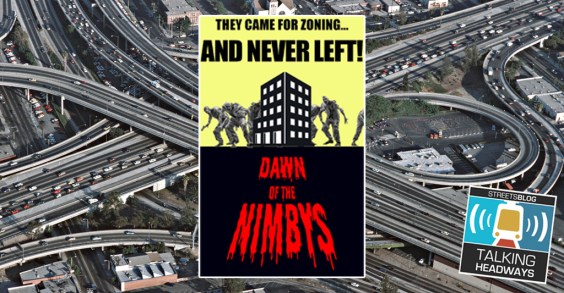 Flickr photo: pbo31
Flickr photo: pbo31The SFMTA's plans to install freeway-style traffic information signs on Oak and Fell Streets were not very popular, to say the least, at last week's meeting of the North of Panhandle Neighborhood Association.
The signs, two of seven the MTA plans to install around the city, are part of the SFgo program that will upgrade traffic signals on Oak and Fell by interconnecting them with fiber optic cables and controlling them by central computer. The MTA staff at the meeting presented the plan as part of the city's transit-first policy, but they acknowledged that the choice of Oak and Fell Streets makes that claim look less than sincere. They also offered little in the way of optimism that the new signals and signs might prevent last week's tragedy, when a motorist sped around a stopped car on Fell Street at Broderick and drove into Melissa Dennison, killing her instantly.
The tragedy prompted City Traffic Engineer Jack Lucero Fleck to join his staffer Cathal Hennessy at the neighborhood meeting. He was compassionate, echoing the sentiments of SFBC Program Manager Marc Caswell in pointing out that it's illegal and dangerous to move around a stopped car at an intersection and that a green light does not mean you have the right of way but rather that you may proceed if the intersection is free of pedestrians and other traffic. Police Lieutenant Lon Ramlan, on the other hand, was irresponsible, implicitly exonerating the motorist by stressing that "it's an accident" and asking people to be careful when they cross the street because there might be a car passing that stopped car.
Since the tragedy and the meeting, conversation in the neighborhood has centered around what can be done on Fell and Oak Streets to calm traffic and restore some of the safety and civility that the neighborhood knew before the last half century of work by traffic engineers to cram more and more cars through the neighborhood. Based on conversations with many local leaders, Supervisor Ross Mirkarimi who represents the district, and transportation professionals, here are some ideas that might provide a consensus.
1. Forget the signs. They make the street look more like a freeway and less like a quiet neighborhood street that it once was and could be again. The Fell Street has the bona fide benefit of telling motorists when the Concourse garage is full (which frequently occurs on weekends) and directing them to the mammoth (and empty) garages at UCSF (which should have been used in lieu of the Concourse Garage in the first place, but that's another story). The Oak Street sign has no benefit, even for motorists.
2. Slow speeds to 18 mph or less. While state law prevents the city from reducing the speed limit to less than 25 mph (except on alleys), it does not prevent the city from timing its lights for very slow speeds. Arguably this would do more for pedestrian safety than restoring the streets to two-way operation, and it would almost certainly do more for neighborhood livability as slower speeds result in much quieter traffic. Portland, Oregon times its lights on certain downtown one-way streets for speeds as slow as 12 mph.
3. Use pricing at the freeway on- and off-ramps to reduce congestion at peak hours. The Transportation Authority's congestion pricing study was focused on preventing downtown congestion, when a fairer and probably more effective focus would be a citywide pricing scheme focused on the freeway on- and off-ramps.
4. Admit that even with pricing, and certainly before pricing takes effect, car congestion is a fact of life in San Francisco (and any city worth living in) and seek to manage it smartly. This is in contrast to dealing with it by increasing capacity at choke points, which just has the effect of moving the problem elsewhere. In the case of Fell and Oak Streets, this means different things for the morning and afternoon commute periods.
In the morning, the choke point is Octavia Boulevard, and backed-up cars on Oak Street divert to Haight and Page Street, important bicycle and transit streets. Using the signals to reduce capacity before it gets near the freeway will spread out the congestion and ease the movement onto the freeway at Octavia. This ought to be coupled with measures to reduce through automobile traffic on Page and Haight Street.
In the afternoon, the congestion takes place mostly on the freeway itself, out of the way of city streets. The problem occurs when motorists enjoy the wide-open expanse of Fell Street after Octavia Boulevard, and especially adjacent to the park. Why does Fell Street need four lanes next to Golden Gate Park when only three lanes feed it? Fell Street along the Panhandle would be a perfect location for a cycle track. It would reduce the lanes to three, still plenty, and take fast-moving cyclists off the crowded mixed-use path on the Panhandle. Doing the same treatment on Oak Street would help the morning congestion problem, for that matter.
The SFgo program as originally conceived is definitely a product of the old Department of Parking (Lots) and Traffic (Congestion), and much of its focus now seems like the last gasp of the DPT, whose logo adorned the informational placard Hennessy brought to show the neighborhood audience. The technology could be used to promote safety and the city's transit-first policy as its proponents currently claim it does, but so far on Oak and Fell Street there is little evidence it is being used that way.





